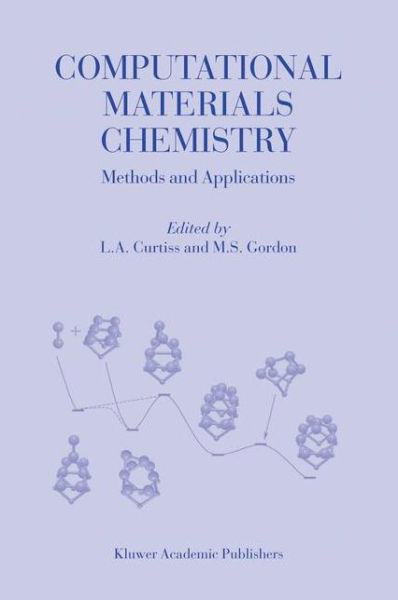
Faites connaître cet article à vos amis:
Computational Materials Chemistry: Methods and Applications 2004 edition
L a Curtiss
Computational Materials Chemistry: Methods and Applications 2004 edition
L a Curtiss
Some of these problem systems can be addressed using ONIOM or other "layering" methods, treating the primary region of interest with a CASMP2 or other multireference-based method, and treating the secondary region by a lower level of electronic structure theory or by use of a molecular mechanics method.
Marc Notes: Includes bibliographical references and index. Table of Contents: Using Quantum Calculations of NMR Properties to Elucidate Local and Mid-Range Structures in Amorphous Oxides, Nitrides and Aluminosilicates.- Molecular Modeling of Poly(Ethylene Oxide) Melts and Poly(Ethylene Oxide)-Based Polymer Electrolytes.- Nanostructure Formation and Relaxation in Metal(100) Homoepitaxial Thin Films: Atomistic and Continuum Modeling.- Theoretical Studies of Silicon Surface Reactions with Main Group Absorbates.- Quantum-Chemical Studies of Molecular Reactivity in Nanoporous Materials.- Theoretical Methods for Modeling Chemical Processes on Semiconductor Surfaces.- Theoretical Studies of Growth Reactions on Diamond Surfaces.- Charge Injection in Molecular Devices Order Effects."Publisher Marketing: As a result of the advancements in algorithms and the huge increase in speed of computers over the past decade, electronic structure calculations have evolved into a valuable tool for characterizing surface species and for elucidating the pathways for their formation and reactivity. It is also now possible to calculate, including electric field effects, STM images for surface structures. To date the calculation of such images has been dominated by density functional methods, primarily because the computational cost of - curate wave-function based calculations using either realistic cluster or slab models would be prohibitive. DFT calculations have proven especially valuable for elucidating chemical processes on silicon and other semiconductor surfaces. However, it is also clear that some of the systems to which DFT methods have been applied have large non-dynamical correlation effects, which may not be properly handled by the current generation of Kohn-Sham-based density functionals. For example, our CASSCF calculations on the Si(001)/acetylene system reveal that at some geometries there is extensive 86 configuration mixing. This, in turn, could signal problems for DFT cal- lations on these systems. Some of these problem systems can be addressed using ONIOM or other layering methods, treating the primary region of interest with a CASMP2 or other multireference-based method, and treating the secondary region by a lower level of electronic structure theory or by use of a molecular mechanics method. ACKNOWLEDGEMENTS We wish to thank H. Jonsson, C. Sosa, D. Sorescu, P. Nachtigall, and T. -C."
| Médias | Livres Hardcover Book (Livre avec dos et couverture rigide) |
| Validé | 26 mai 2004 |
| ISBN13 | 9781402017674 |
| Éditeurs | Springer-Verlag New York Inc. |
| Pages | 372 |
| Dimensions | 159 × 244 × 27 mm · 820 g |
| Langue et grammaire | English |
| Éditeur | Curtiss, L.A. |
| Éditeur | Gordon, M.S. |
Voir tous les L a Curtiss ( par ex. Hardcover Book et Paperback Book )

